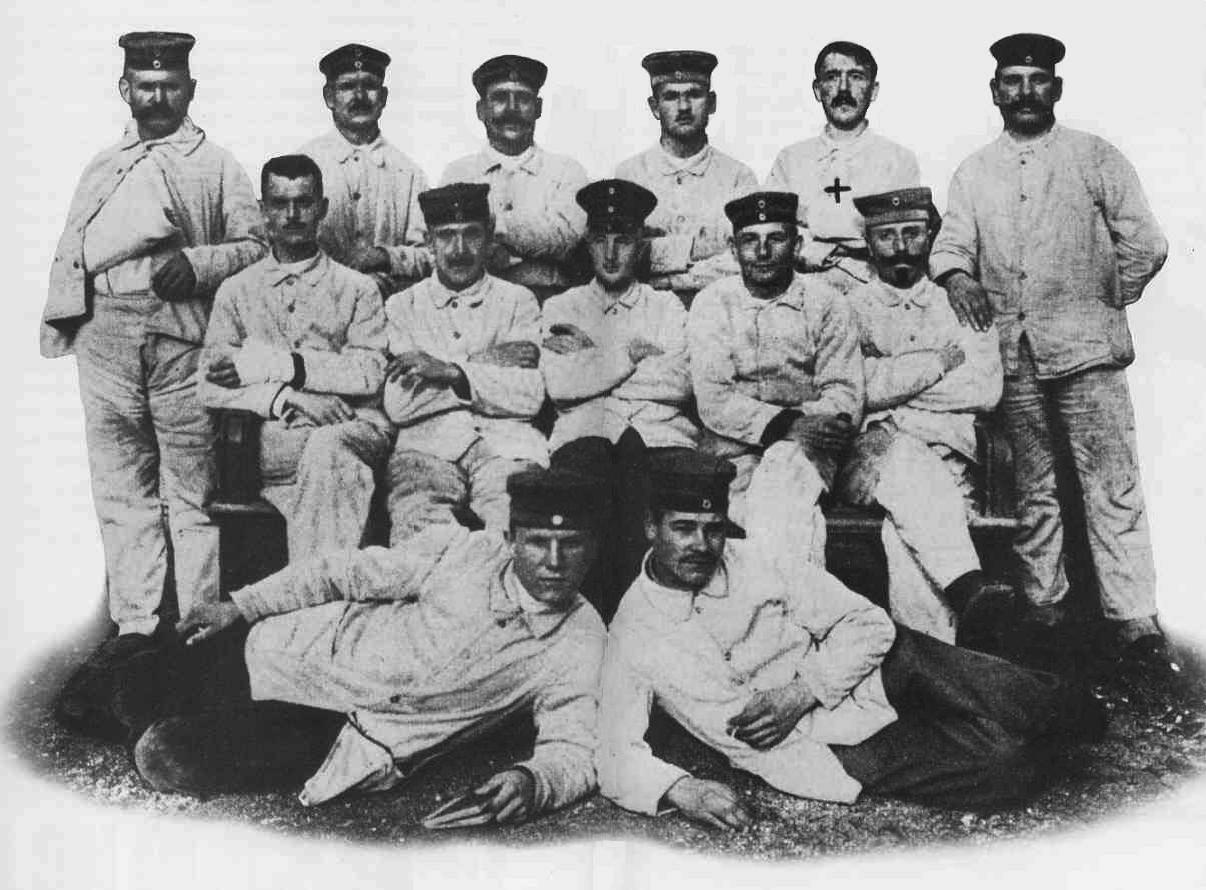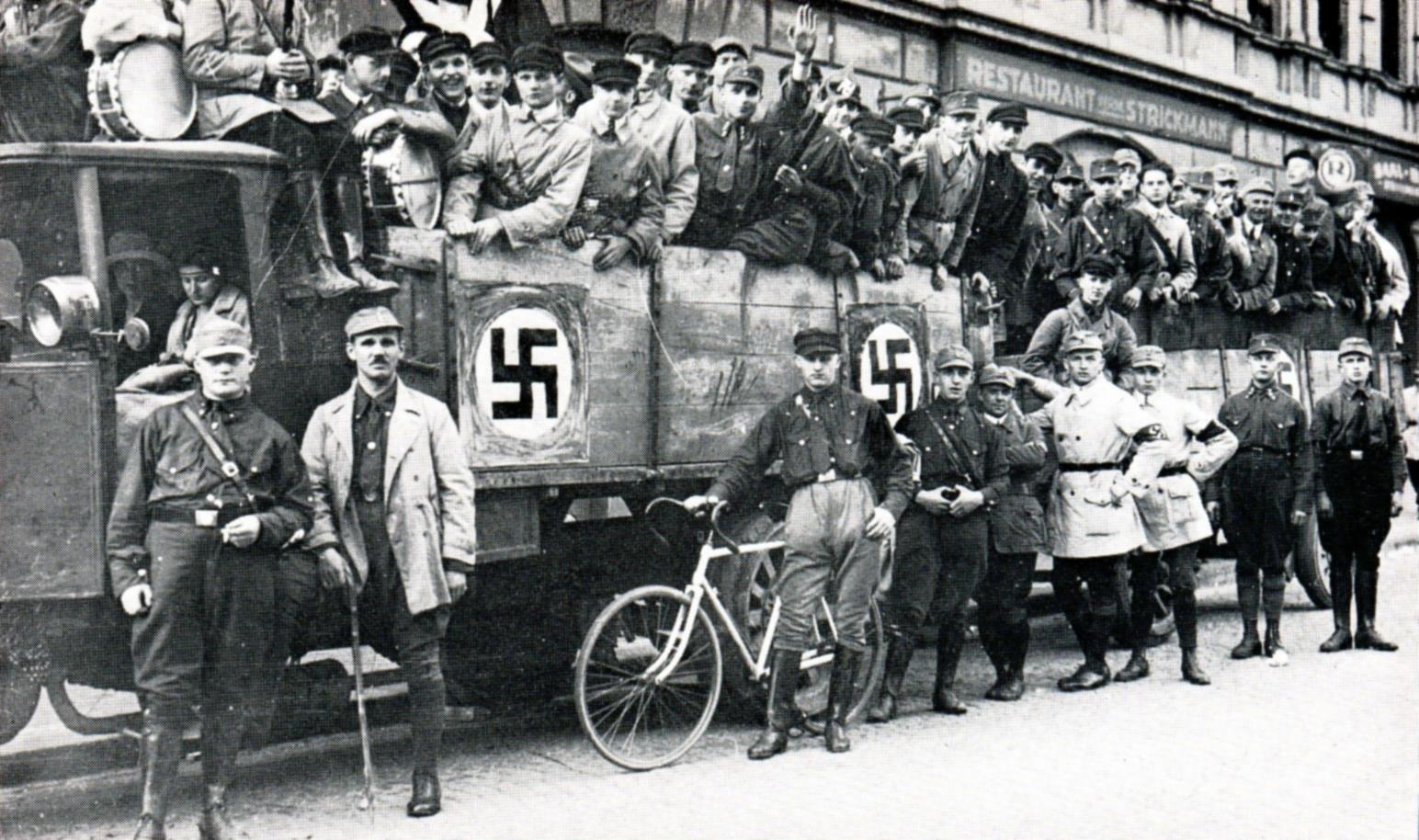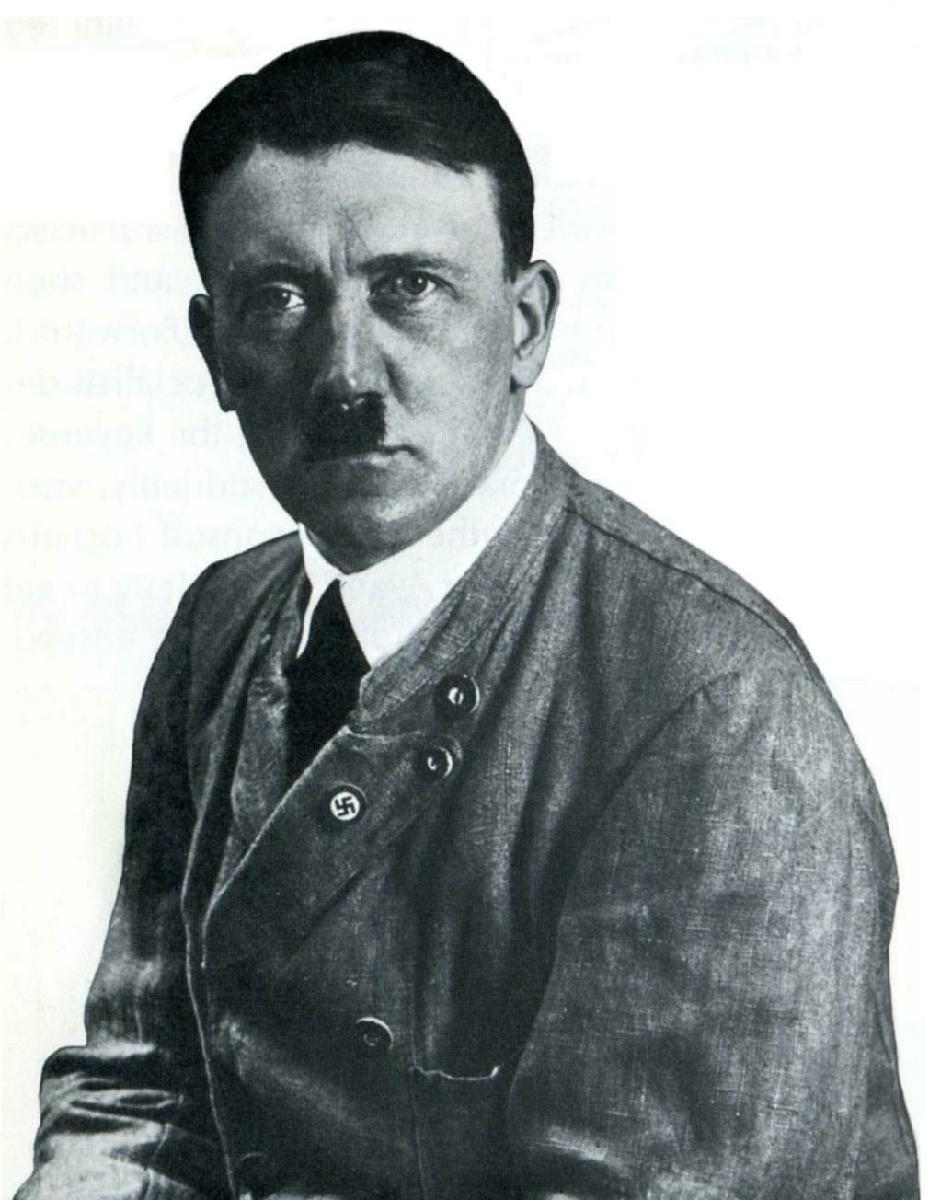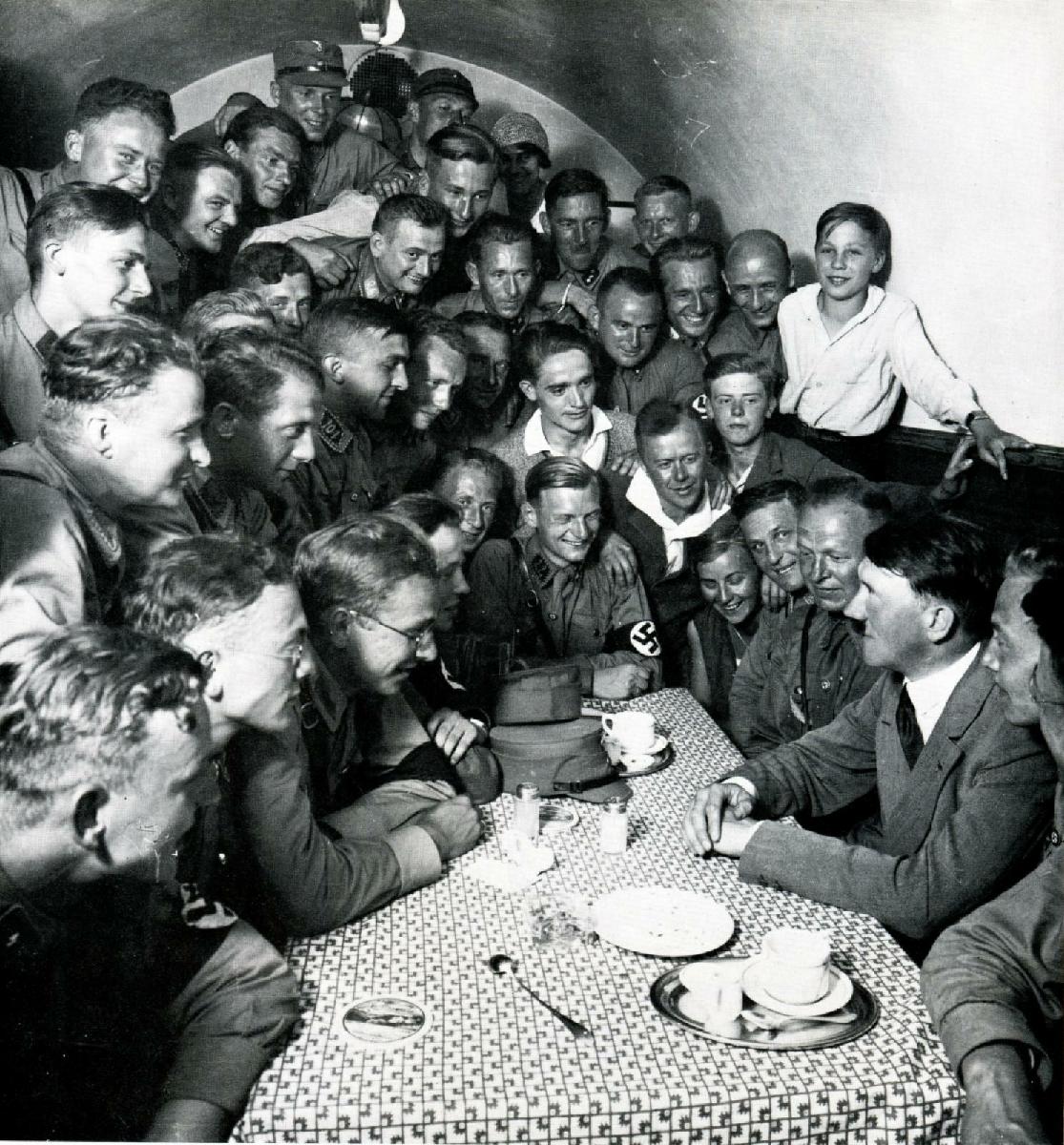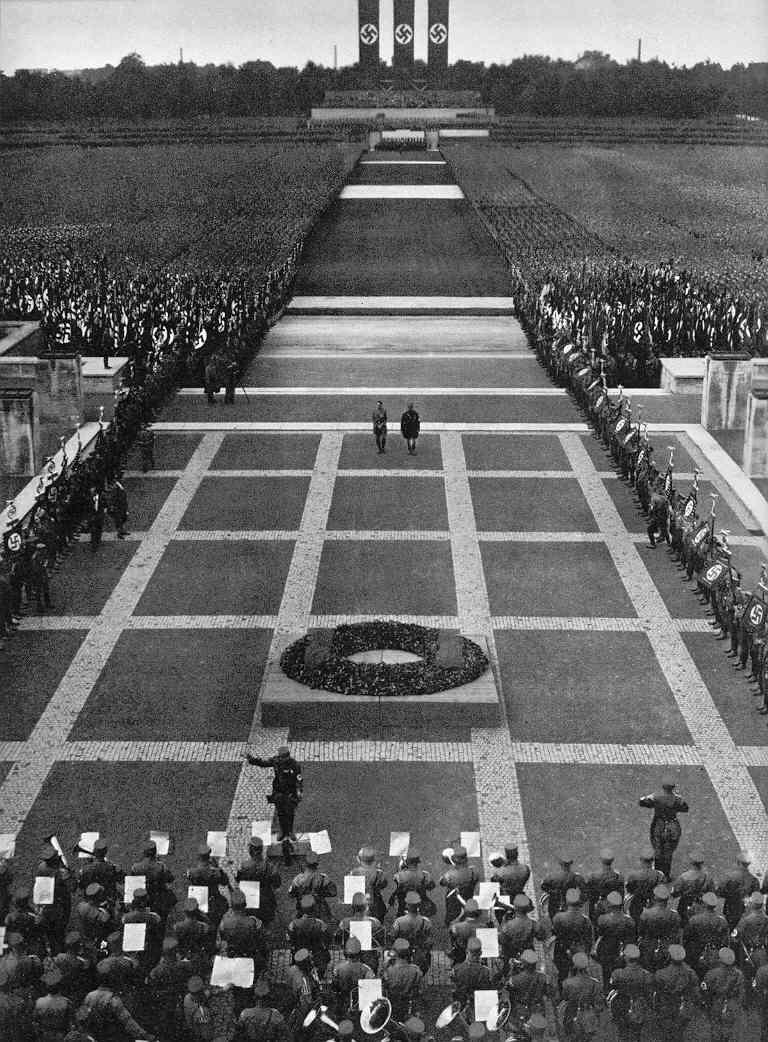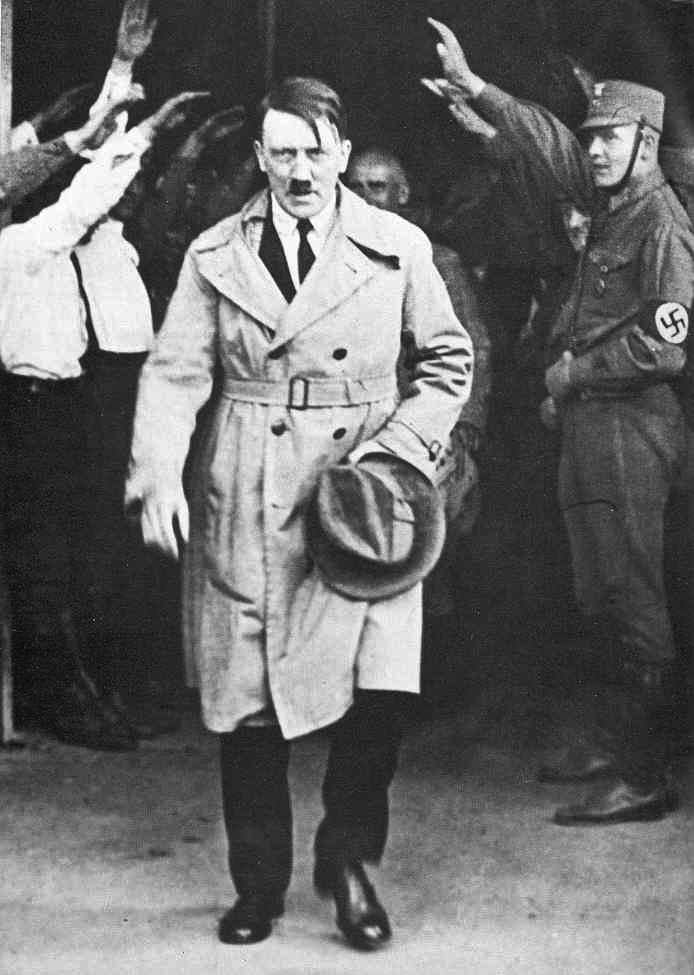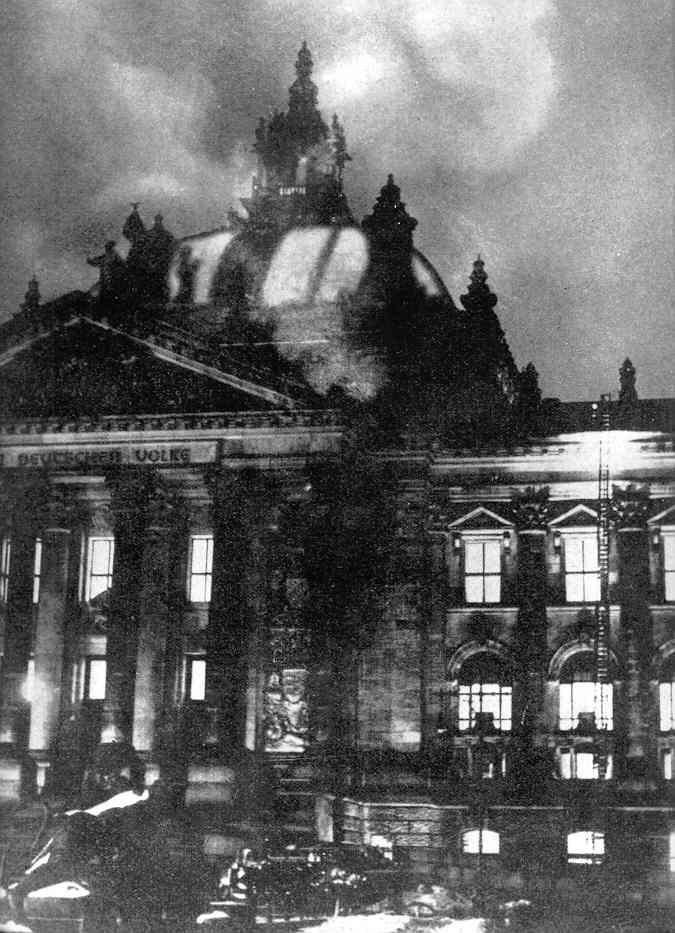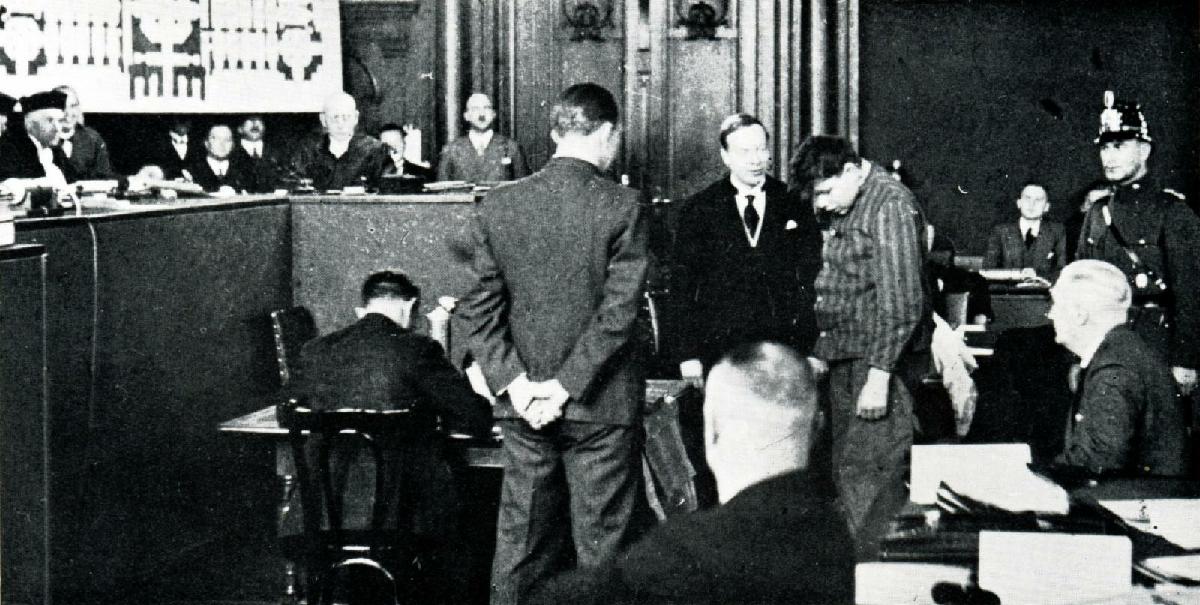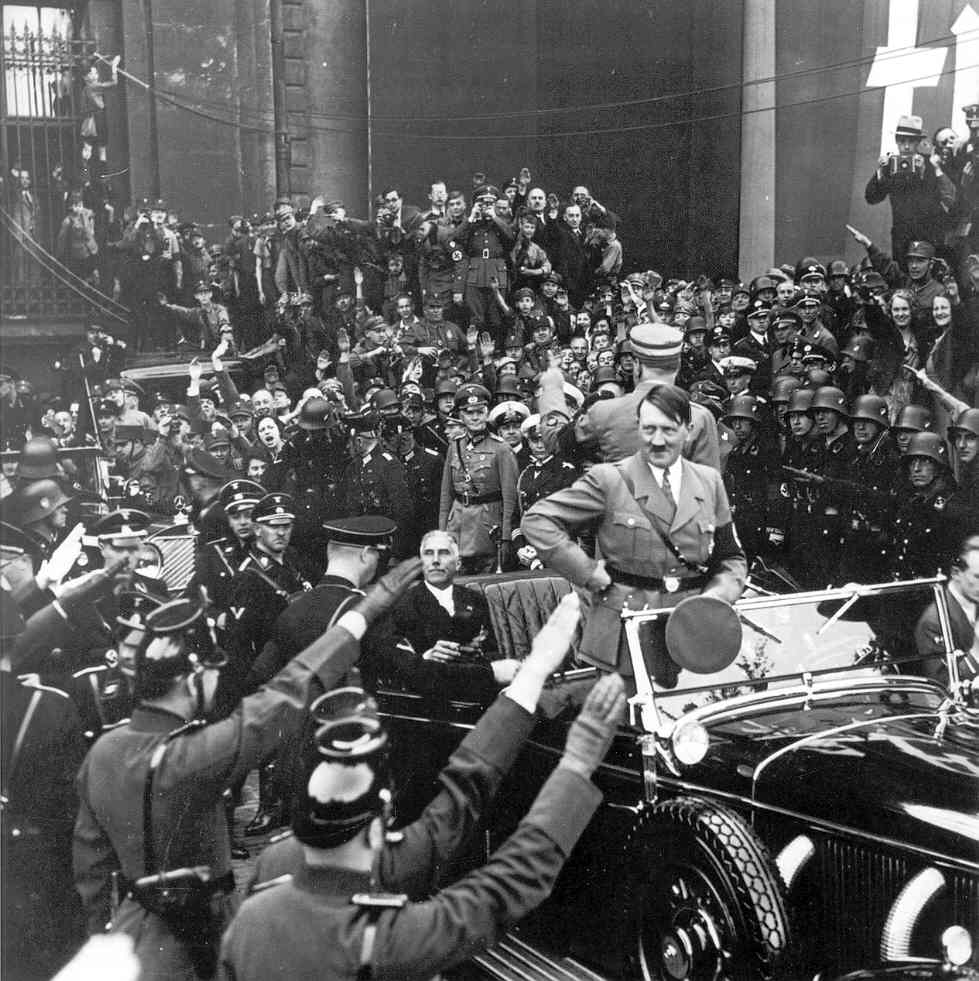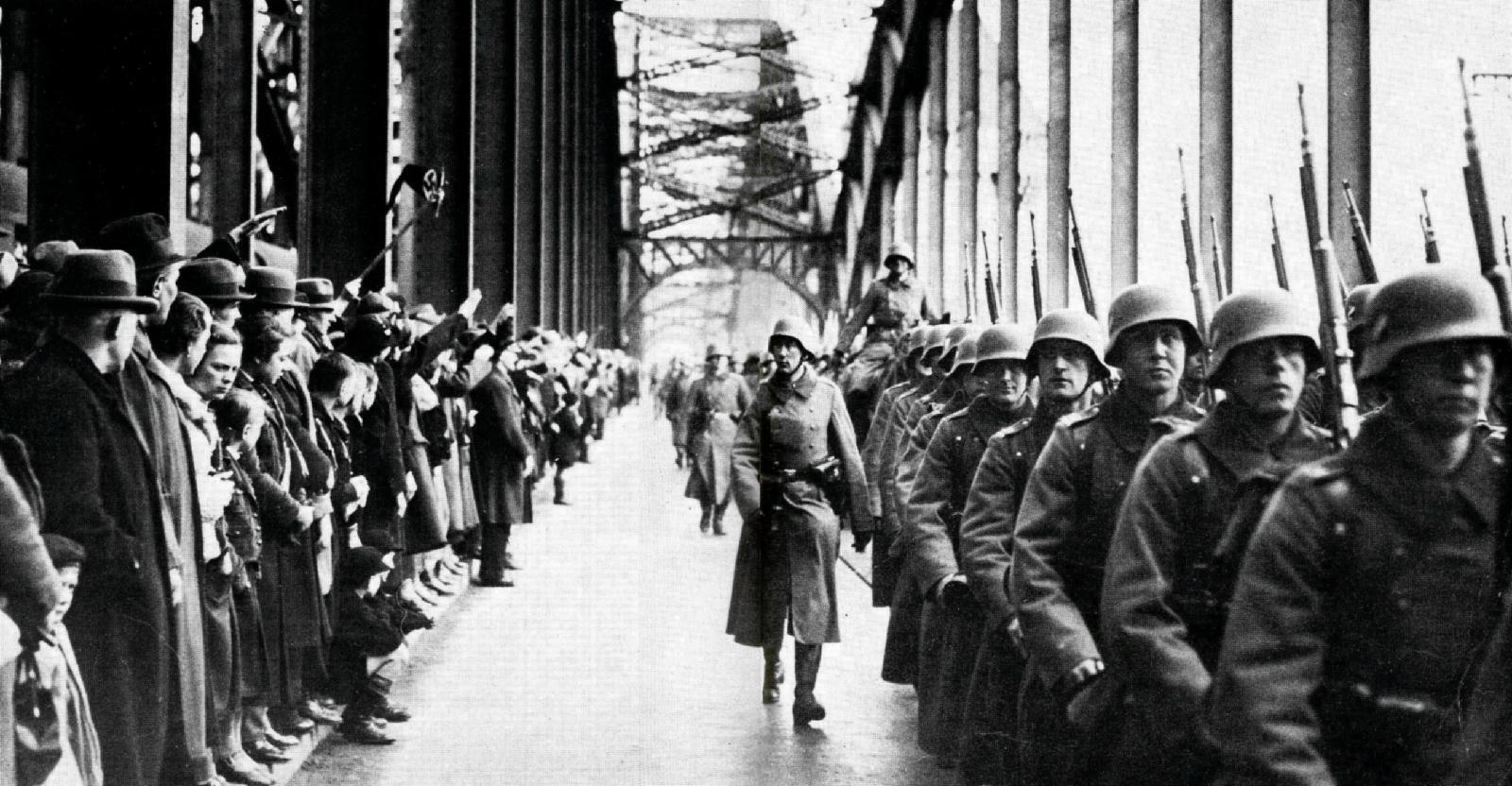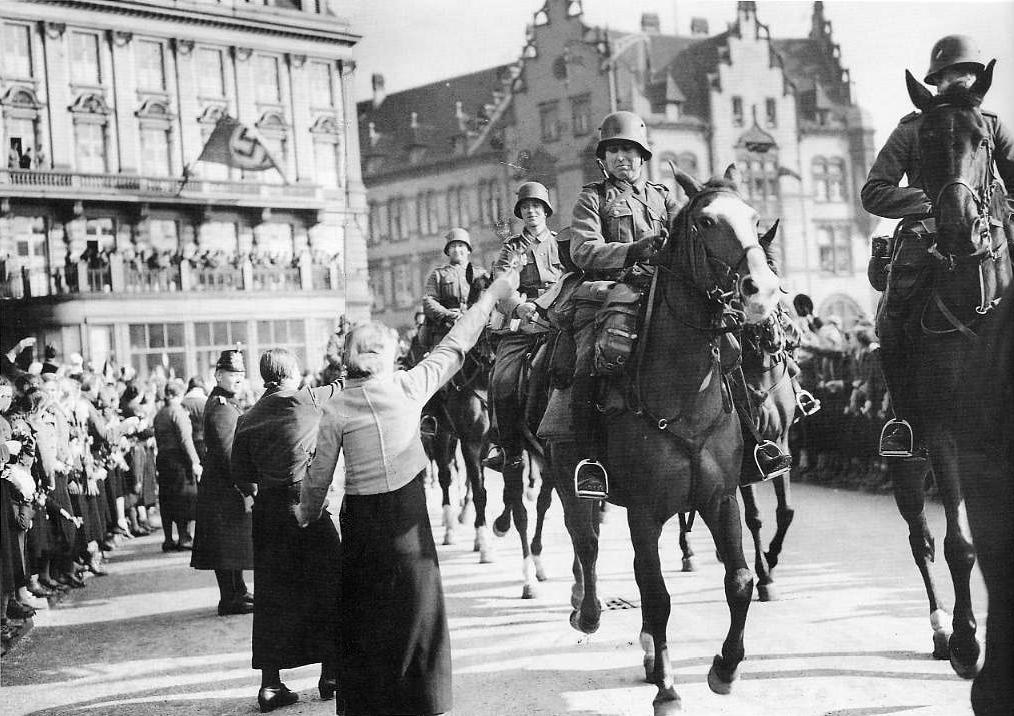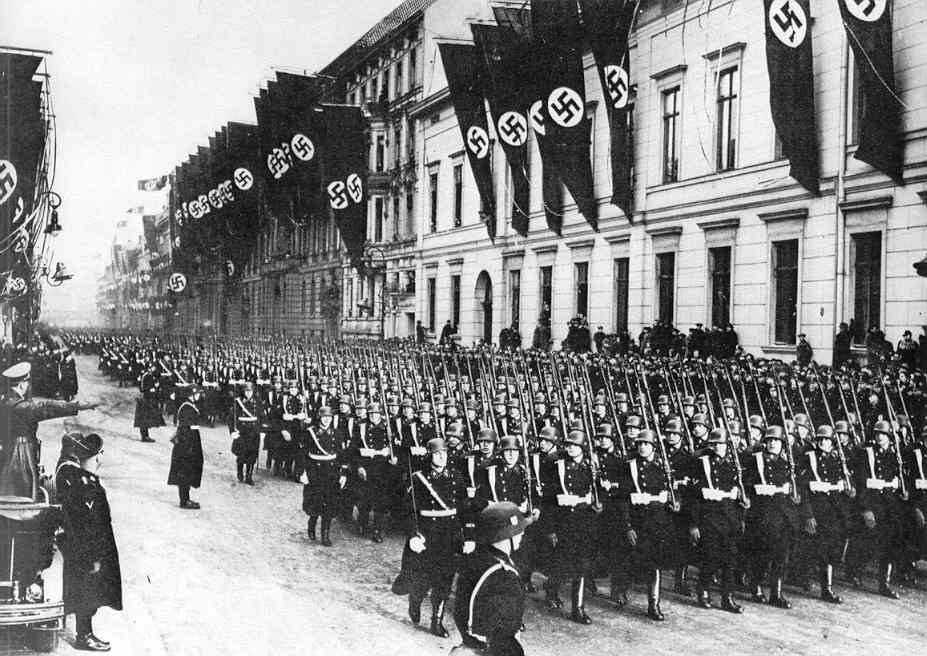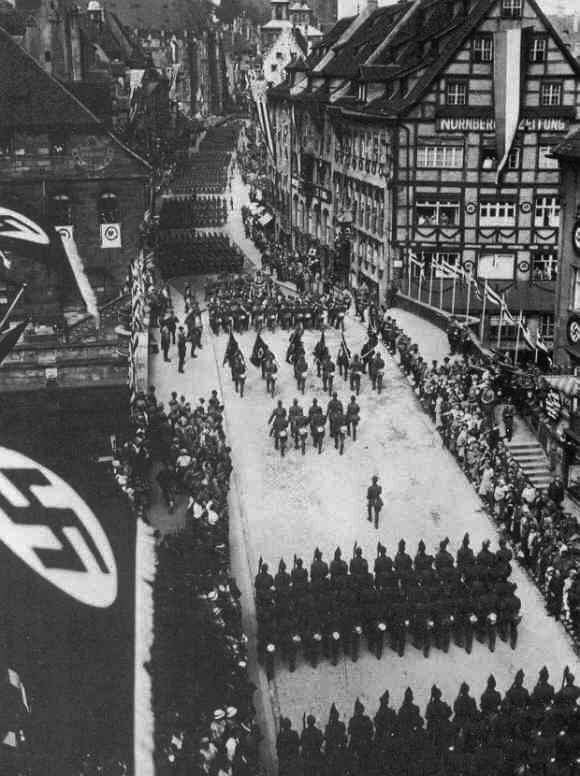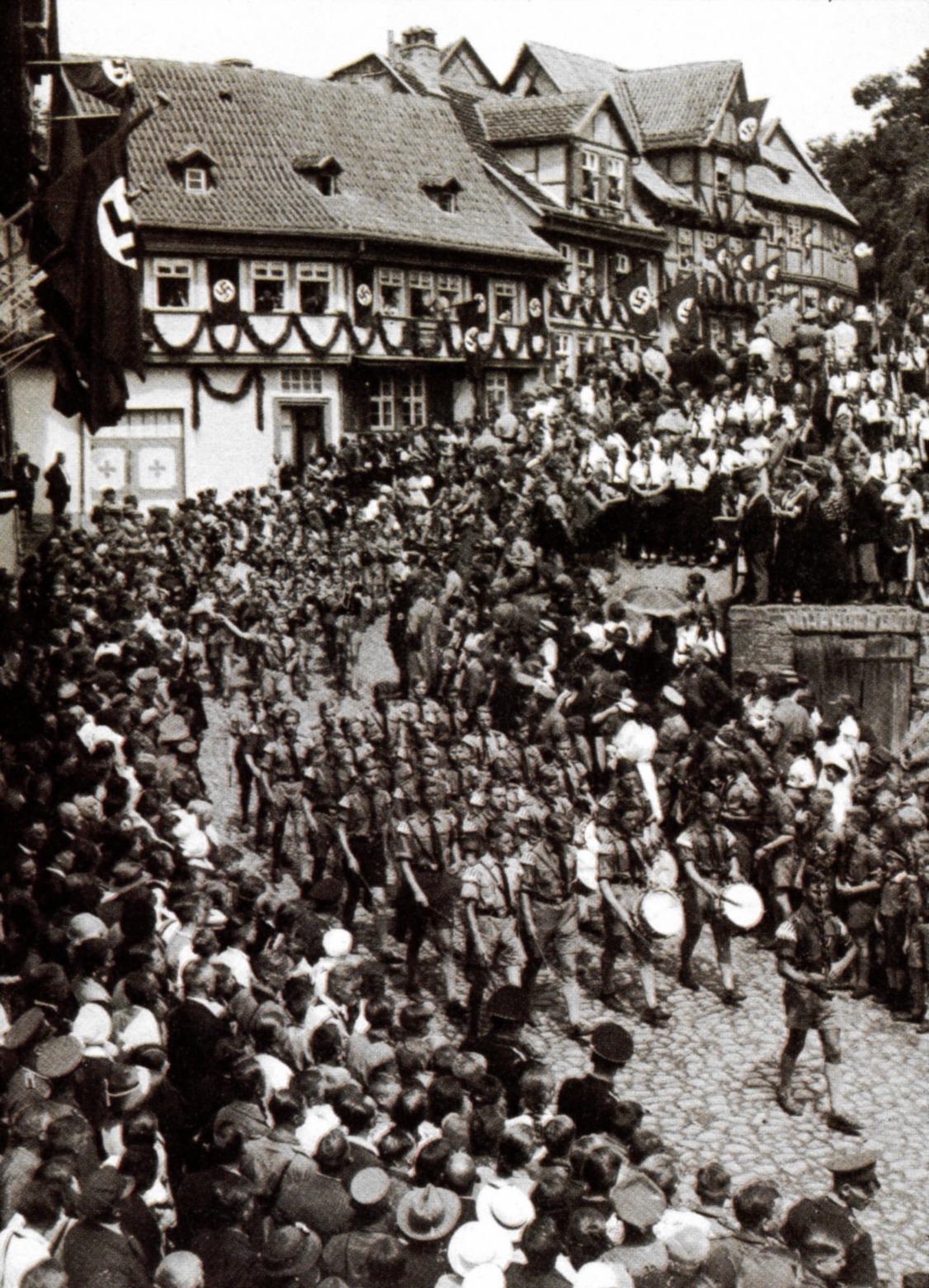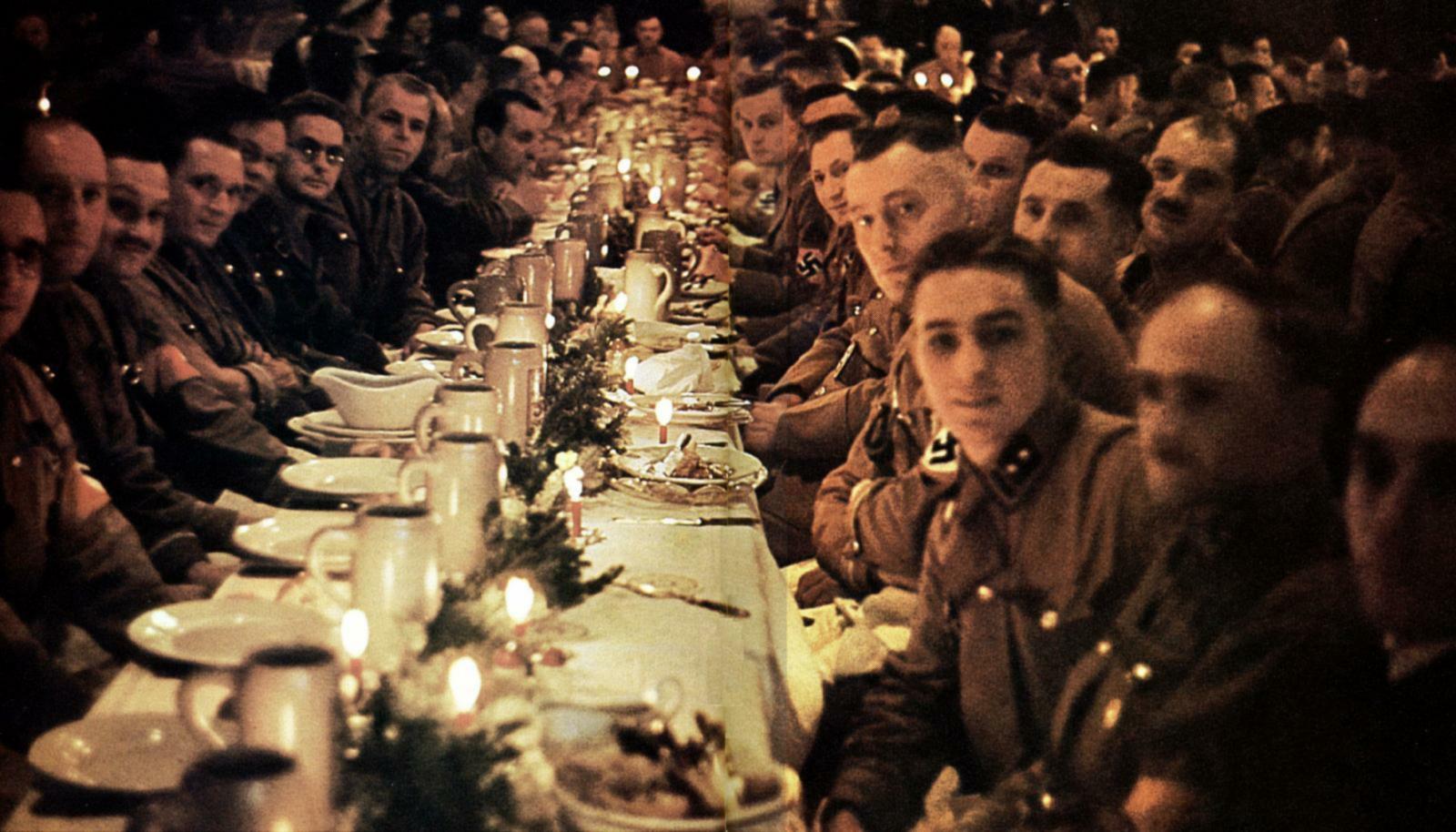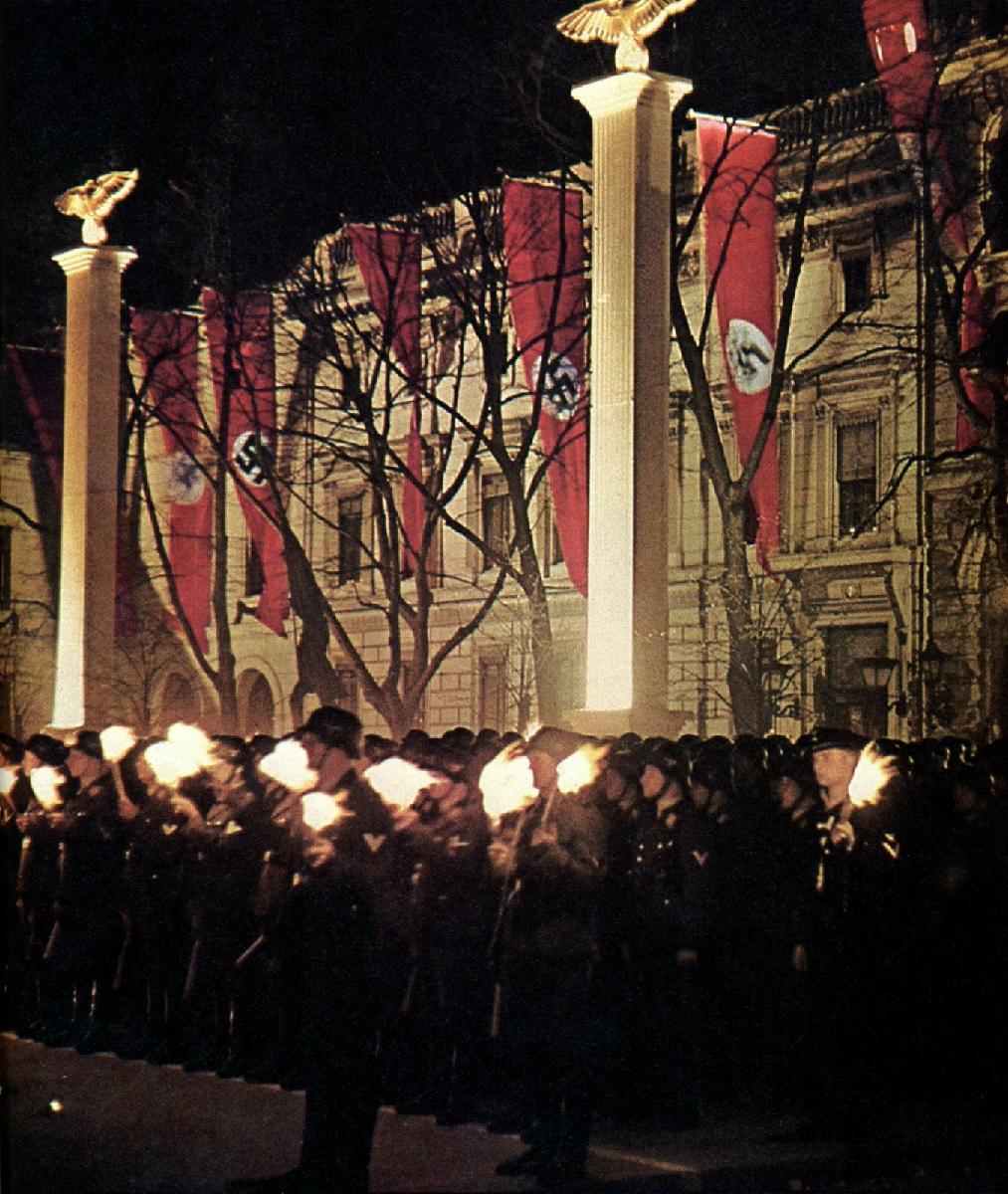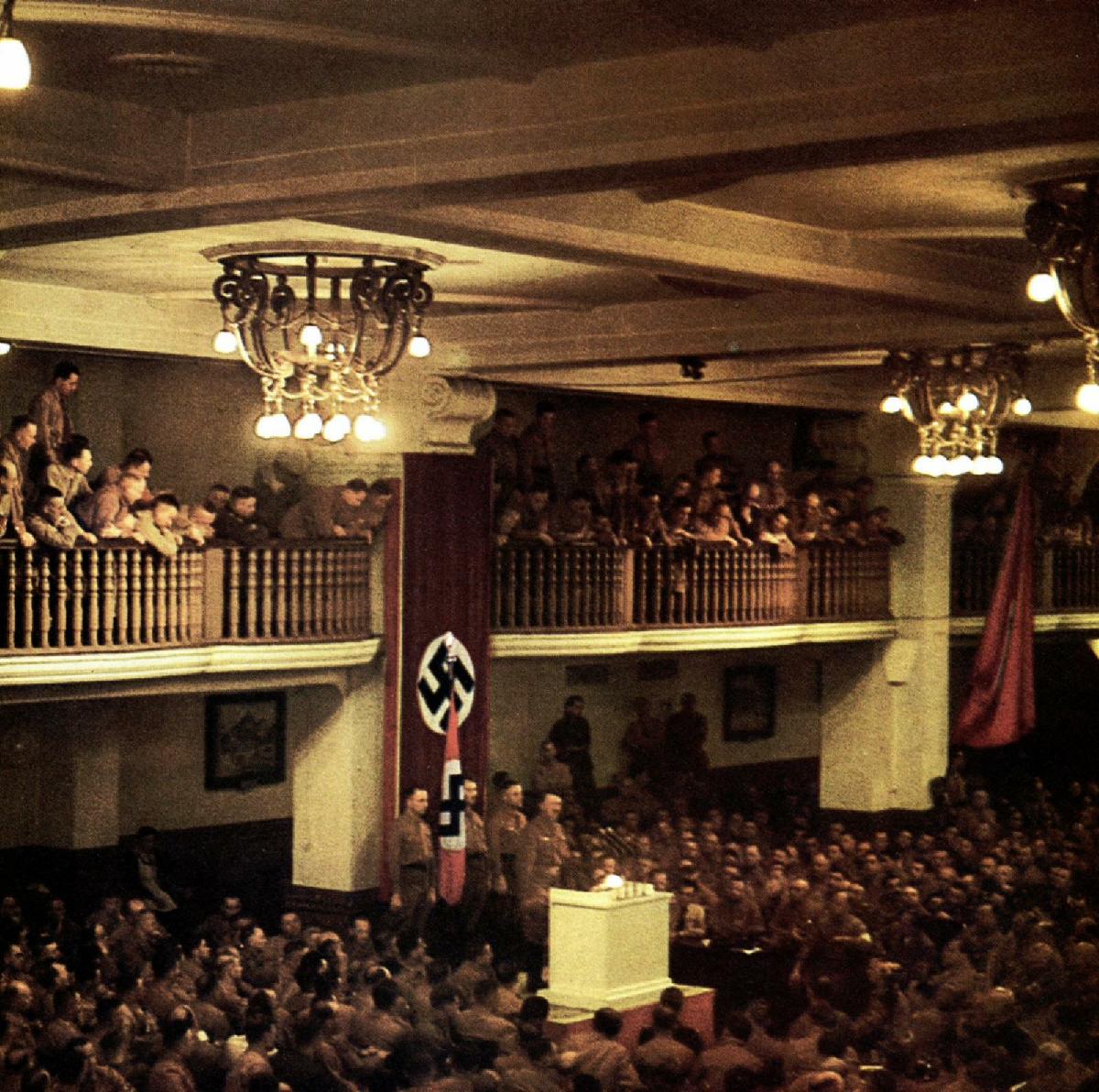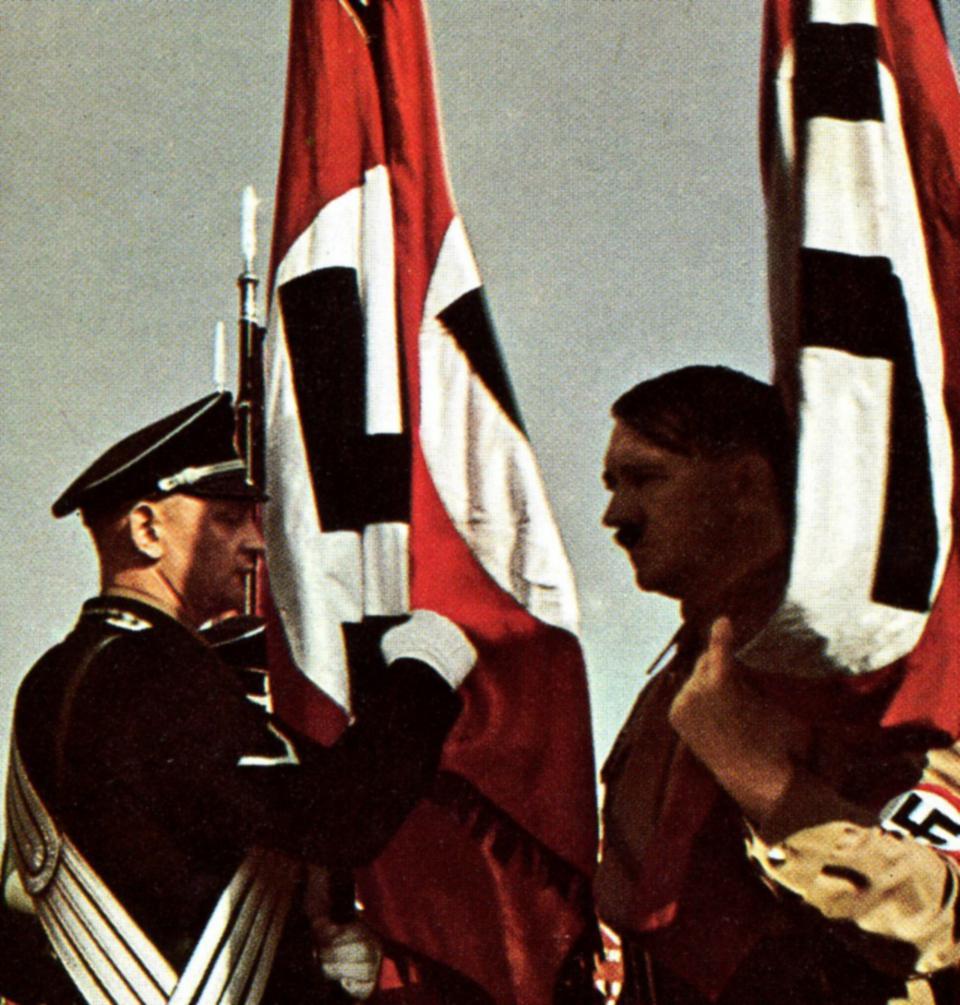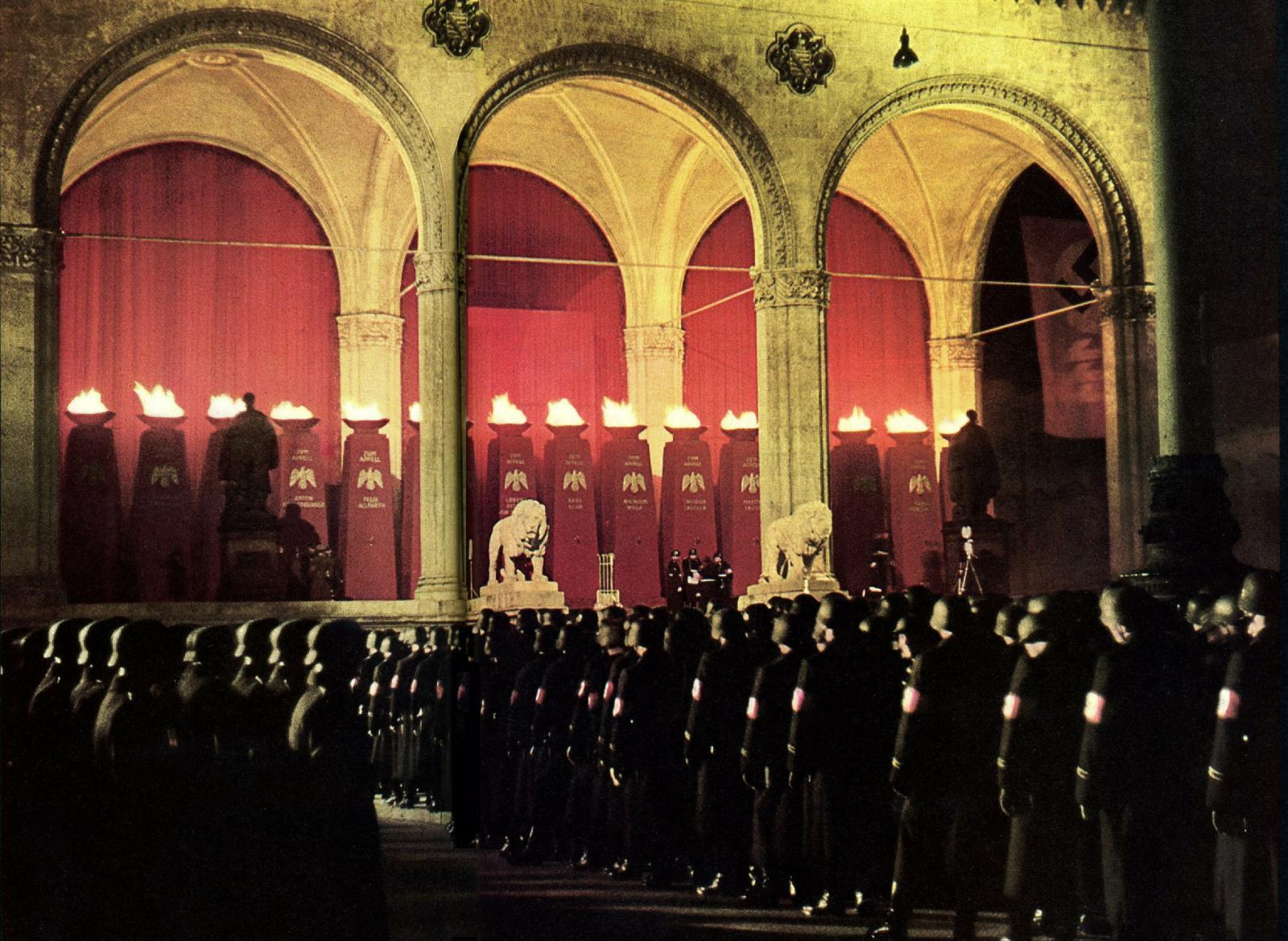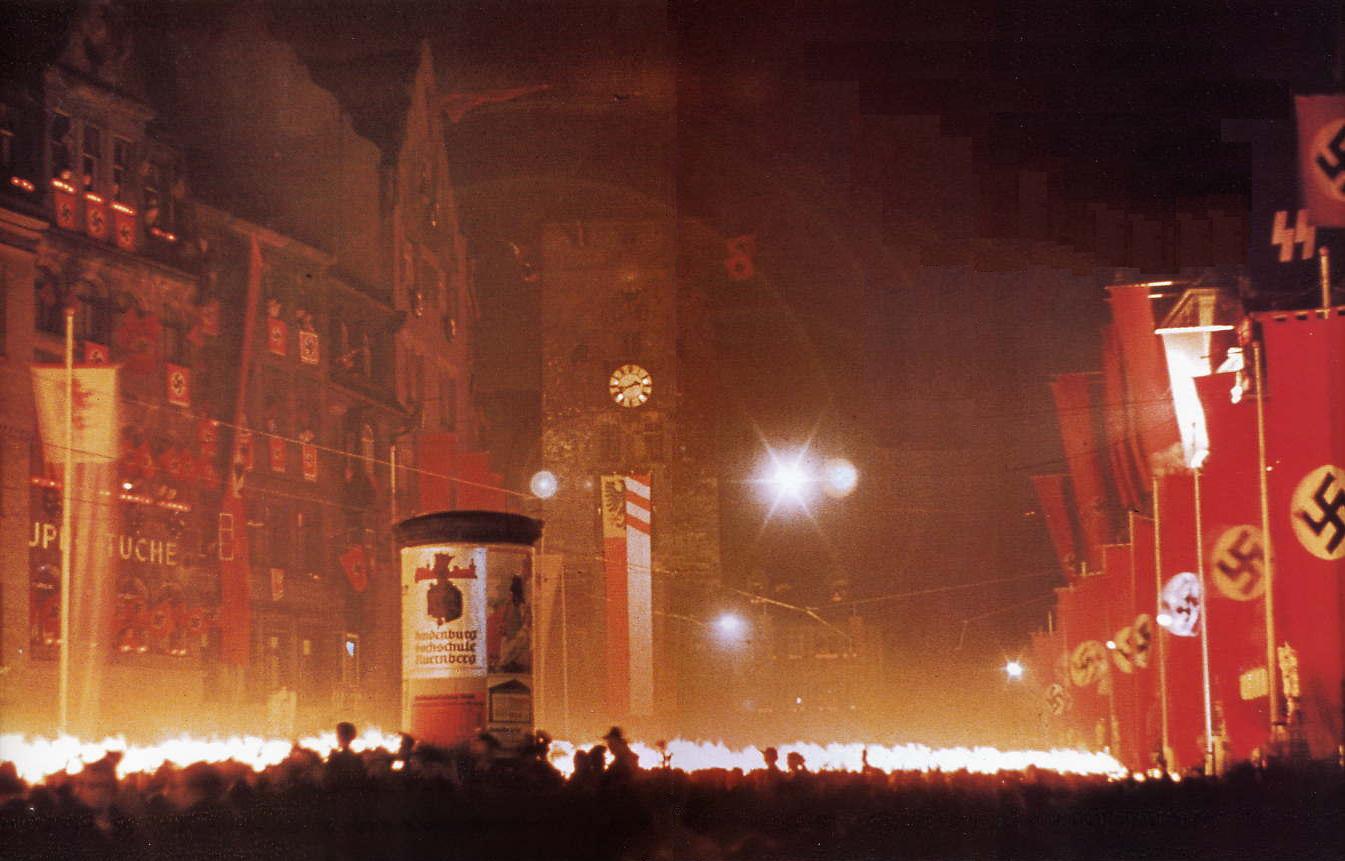15. DEPRESSION ... AND MORE DICTATORSHIP
(THE 1930s)


HITLER'S GERMANY
 Hitler's Beer-Hall Putsch
Hitler's Beer-Hall Putsch
 Hitler's New Order (Neuordnung)
Hitler's New Order (Neuordnung)
 Hitler build his own "Third Reich" (Third
Hitler build his own "Third Reich" (Third
Empire)
 And he reshapes Germany around his
And he reshapes Germany around his
own personal will
The textual material on page below is drawn directly from my work
A Moral History of Western Society © 2024, Volume Two, pages 143-149.
HITLER'S BEER-HALL PUTSCH |
| One
of the most notable of those attempted coups occurred in Bavaria: the
unsuccessful Munich Beer Hall Putsch of November 1923.
Bavaria was a German state caught in deep turmoil from the
hyperinflation, with street protesting gathering force and plans of
three local politicians (the "triumvirate") to seize power and
establish a dictatorship. But Hitler was on the scene with his
own similar plans – aided by the wartime commander Ludendorff (to add
prestige to Hitler’s bold plan) – to take over the Bavarian government
and from there march against Berlin. With some 600 SA (Nazi)
paramilitary under his command, Hitler surrounded a large meeting in
the main Munich beerhall led by the three politicians. He hoped
to convince the three to join him ... which reluctantly they did.
The next morning Hitler marched 2000 of his men on the Munich city hall
... and there shooting broke out with four state police and sixteen
Nazis killed in the exchange of fire. Hitler and many of his men
were also wounded. Word spread quickly of Hitler’s
activities. Students protested the action, the Catholic Church
sided with the Bavarian government and the triumvirate began to lose
its nerve. Now Hitler’s move lost its momentum ... and Hitler was
soon arrested and charged with high treason. The trial which followed (February-April 1924) was covered widely by the nation’s newspapers, elevating Hitler to the status of a political celebrity (placing him in the same company with Ludendorff who was also on trial with Hitler). As it turned out, the judge who heard and decided Hitler’s case was sympathetic with the basic goals of the putsch, particularly as Hitler presented him a well laid out explanation of Hitler’s desire to see Germany restored to greatness. Thus the judge went light in his sentencing of Hitler: five years of easy imprisonment (comfortable quarters and regular visitors daily). Hitler took advantage of this time to sit down with his close associate Rudolf Hess to write out his memoirs, Mein Kampf (My Struggle), which clearly outlined his political thinking and political goals for Germany ... a major piece in Hitler’s later rise to power. Then, only nine months into his imprisonment, Hitler was released from prison for good behavior. Hitler was something now of a changed man: no mere neighborhood rabble rouser, but a shrewd politician who understood better the path to power he must follow. He would use his ideas rather than violent insurrection in the streets to bring others alongside him in his quest to raise Germany once again to the greatness he dreamed of. He was confident that destiny (even God) was with him. |
Adolf Hitler (top - second
from right with the cross on the photo indicating him) among wounded at the German
Army hospital in Beelitz - 1916
Foreign Records Seized, 1941, National Archives
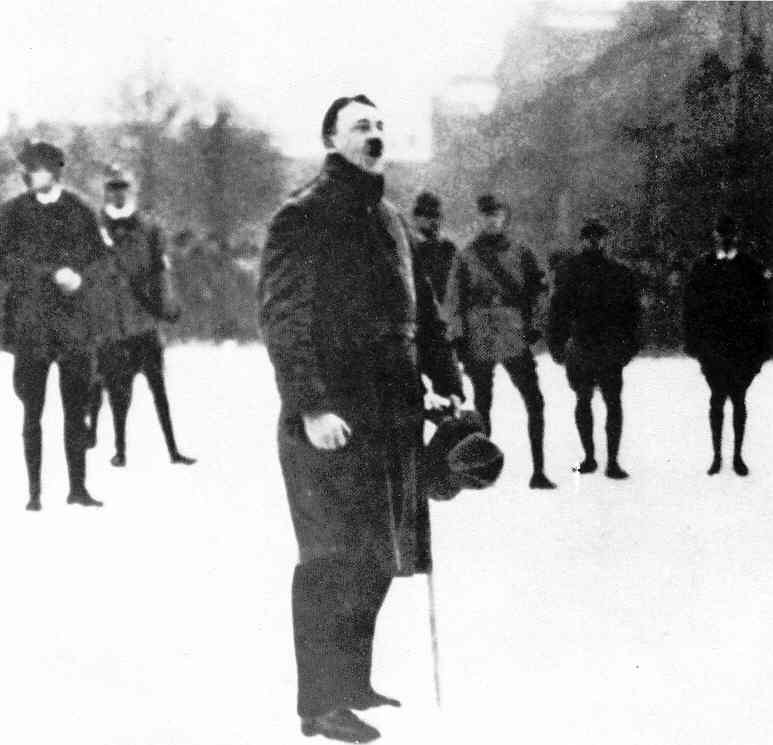
Imperial War Museum, London
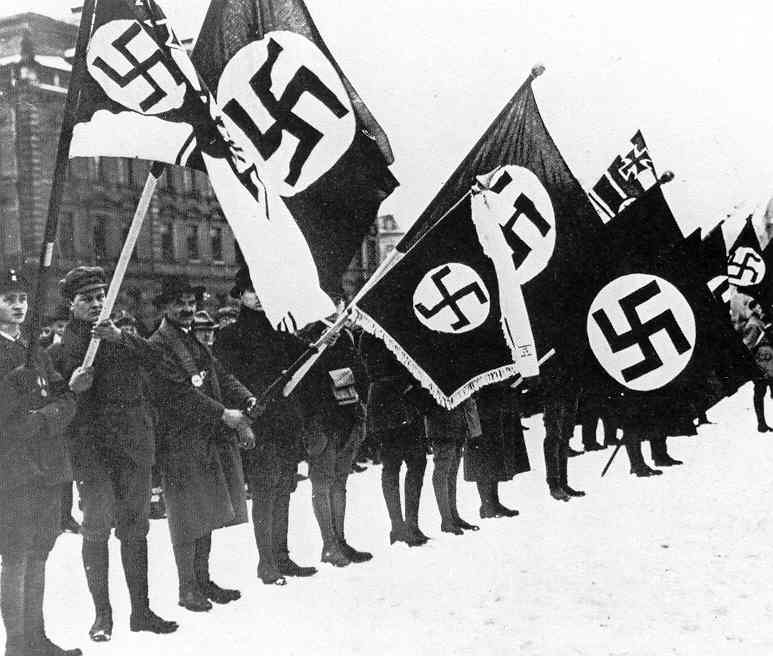
Storm troopers in home-made
uniforms display homemade flags at the rally
National Archives
Hitler's early supporters
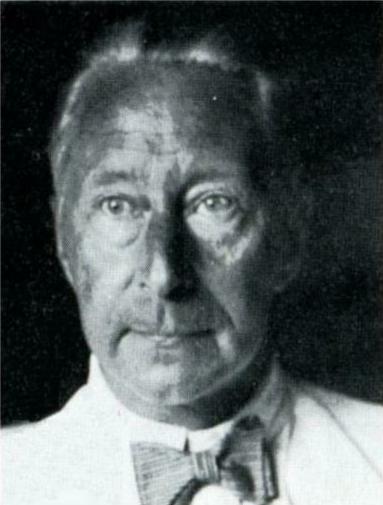 Crown Prince
Wilhelm
Crown Prince
Wilhelm 
first Nazi leader, Ernst Röhm
 World War One air ace,
World War One air ace, Hermann Göring
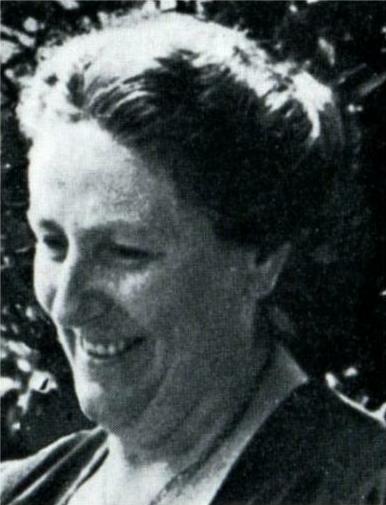
Winifred Wagner
Hitler tries – unsuccessfully – to overthrow the Bavarian Government - 1923
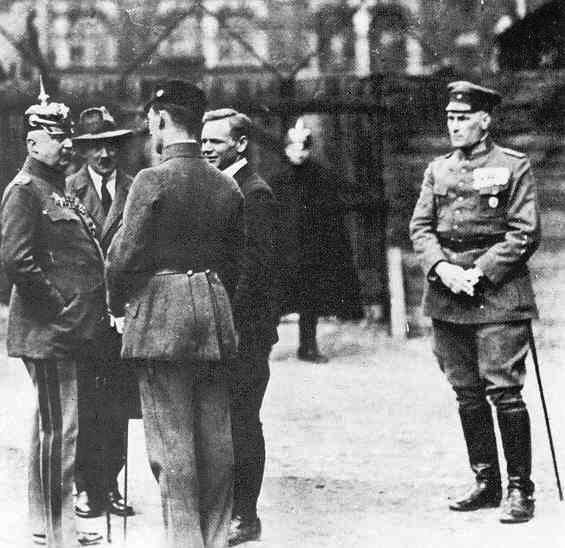
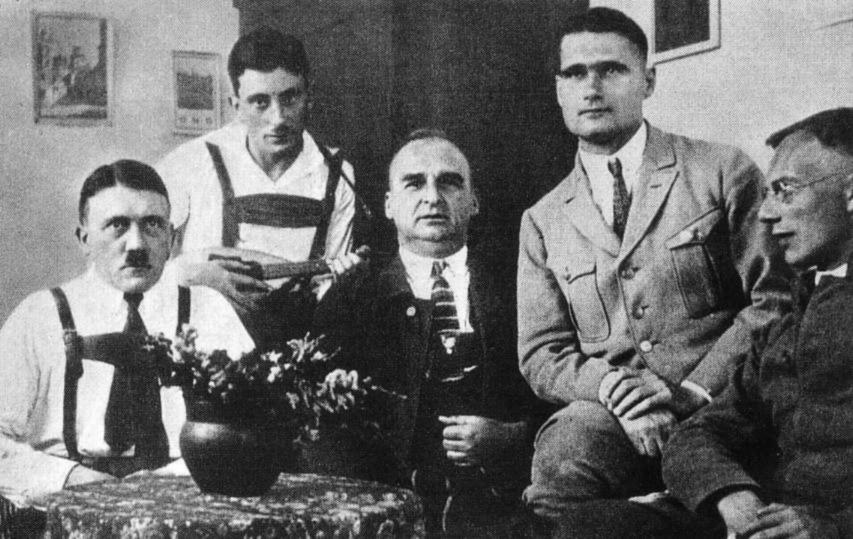
Hitler "imprisoned" in Landsberg Fortress receiving a visit from Rudolf Hess and others (during his stay he dictated the first half of Mein Kampf to Hess)
HITLER'S RISE TO POWER |
| The
Weimar Government had brought a degree of prosperity and some element
of legitimacy to the democratic social order of the new Germany.
But it could never remove the memory of its origins as a system
basically imposed on Germany by its former enemies. Also the
horrible years (1922-1923) of the mark’s inflation, which had ruined
the life savings of millions of middle class Germans, was an early
legacy of the Weimar Republic which was difficult for those Germans to
forgive and forget. The ambitious Hitler (like Mussolini) knew
how to tap into this discontent ... and his book Mein Kampf, though a
collection of rambling thoughts, laid out a program and promise of
greatness awaiting the German Volk (people). The book soon became
a best-seller in Germany ... and was a key source of income for Hitler
and his growing Nazi Party. Hitler was a colorful orator, even spell-binding in the hyper-emotionalism he seemed always to be able to rise to ... as if he were somehow divinely anointed or inspired. He spoke before public audiences often, loudly denouncing the multi-faceted conspiracy of: the international clique of politicians and financiers (full of inferior Jews) whose goal as laid out in the infamous Versailles Treaty was to keep Germany in a servile condition; the communists (also full of inferior Jews) who wanted to create an empire reaching from the Slavic East (also full of inferior Slavs) to all of Europe; and various social sub-groups who wanted to mix racially with the pure-Aryan German (especially the inferior Jews). He cast democracy as a system, though existing widely in Europe, as inferior to the natural instincts of the superior German Volk. Democracy had been imposed on Germany by the Treaty of Versailles... designed purely to allow inferior people to hinder the German rise to greatness. And he laid out clearly (in Mein Kampf) the strategy he had in mind for German success: to bring Germany under a great leader (Führer) who would direct Germany in its achievement of Lebensraum (living space) for an expanding German Volk, directed primarily toward the wheat and oil fields of the southwestern regions of the Soviet Empire. But France would have to be defeated first in order then to give Germany a free hand in seizing this Lebensraum. Sadly few people paid much attention to or took seriously these grandiose dreams. But Hitler did. And so did his growing group of followers. Taking a page from Mussolini and his quasi-military Blackshirt Fascists, Hitler’s Nazis worn brown quasi-military uniforms, marched in formation at frequent rallies as a corps of Storm Troopers (Sturmabteilung or SA), with banners flying, marching music blaring, torches and searchlights lighting up the night sky if it were a nighttime rally. Dr. Goebbels was the master planner for such an event (his talents would have made him a very successful Hollywood producer if he had chosen to go a less offensive path in life!). Then there was also the growing body of the SS (Schutzstaffel), a black uniformed elite corps whose sole purpose was to serve the cause not of Germany but of their Führer, Hitler. Hitler was planning to build the German nation around his own personal will ... as he saw things, give strength of purpose and solid unity to the German Volk as he and the nation became one. At first there were sneering German critics who saw this all as dangerous nonsense. But when the Great Depression finally hit Germany at the beginning of the 1930s the critical tone began to change. For instance, in the 1928 national elections in Germany, Hitler’s Nazi Party received only 2.6% of the vote. But in elections two years later (September 1930) that figure was up to 18%, making the Nazi Party the second largest (among many parties) in the Reichstag. But while the Nazis took the democratic path of standing for national elections, they were also busy in the streets terrorizing their political opponents ... notably members of the Communist Party (the KPD) with whom they had a particular grudge. Deaths occurred on both sides in these street battles and beerhall brawls. Jews were also favorite targets of the SA thugs. Laws were passed to outlaw many of the activities of these paramilitaries ... though they largely were ignored. It was beginning to look as if the Germans were headed toward all-out civil war. In the presidential elections 1932, in a run-off vote for the Germany Presidency Hitler received 36.8% of the vote ... against German military hero Hindenburg’s 53%. Hitler was gaining power. Likewise, the Nazi Party position in the Reichstag expanded to 230 seats. Hitler was asked by Germany’s Catholic Center Party leader and newly appointed Chancellor Franz von Papen to participate with him in a coalition government as Vice Chancellor. But Hitler declined, assuming that in waiting, his party strength would only continue to grow ... so that he could then take the reins of government solely on his own terms. But in the November elections of the same year – called because of the failure to find the formula for a stable government formula – his Nazis registered a decline in the vote (33%), losing 35 seats but remaining still the largest party in the Reichstag. On the Left, the Communists received 17% of the vote and the Social Democrats 20%. There was talk of the two parties of the Left trying to form a coalition government. But Stalin had given the order to the German Communists to avoid such a coalition. Von Papen was at a loss as to what he could do to resolve the political impasse. He finally proposed to President Hindenburg the not very bright idea of asking Hitler to take the Chancellorship and he, Papen, would serve as Vice Chancellor ... though nearly all the other positions on the Cabinet would be held by members of his Catholic Center Party. He was certain that he could control Hitler. Thus Hitler became German Chancellor at the end of January 1933. That was a huge mistake ... though not Papen’s only mistake. He allowed a Nazi to take the position of Minister of the Interior, the cabinet post that commanded the nation’s police. But the situation was still not stable ... and Hindenburg called for new elections for March. Hitler’s Nazis campaigned on the basis of a supposed conspiracy of the Communists to take over Germany, which the Nazis claimed that they alone were prepared fully to ward off. Then conveniently a fire broke out in the Reichstag prior to the elections, a Dutch Communist was arrested, and Hitler proclaimed this event as the start of the expected Communist takeover. Hitler then gained from Hindenburg the emergency power to suspend all civil liberties ... and proceeded to arrest thousands of German Communists. With the Communists thus removed, the elections which followed allowed the Nazis and a small coalition partner (the Nationalists) to form a government based on their combined majority of 52% of the seats in the Reichstag. Then with the arrest or intimidation of a number of Social Democrat members of the Reichstag (and with even support from members of the Center Party) Hitler could now proceed to the passage of the Enabling Act (requiring a two-thirds vote) giving him the right to rule Germany by decree. On March 27, 1933 the Reichstag officially put Hitler in power as German dictator. Hitler had both the Communist and Social Democrat Parties outlawed. But the Catholic Center Party and the Nationalist Party also agreed to disband and in July the Nazi Party was declared to be the only party allowed to operate in Germany. When Hindenburg died the next year in August (1934) Hitler simply did away with the office of President ... and assumed for himself the title of Leader (Führer) of Germany. |
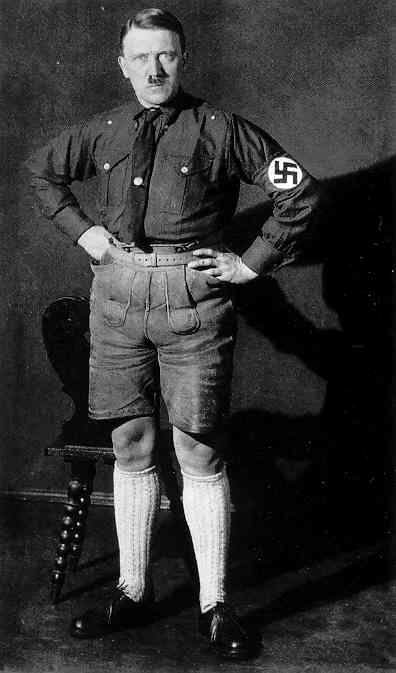
National Archives
National Archives
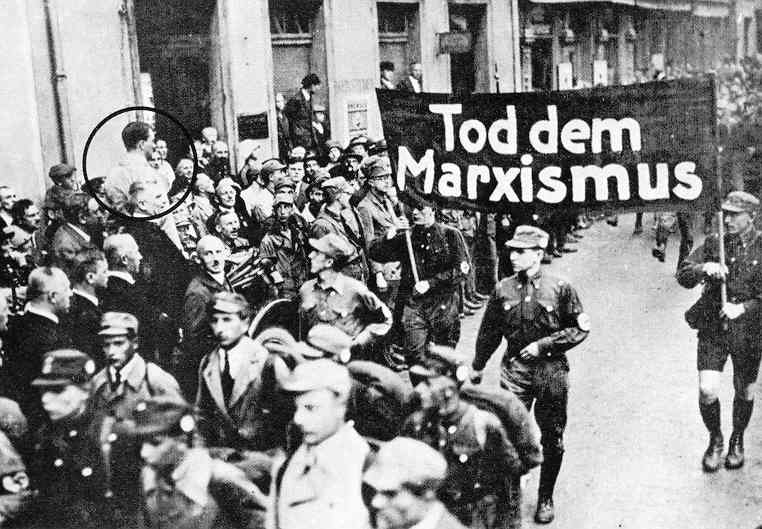
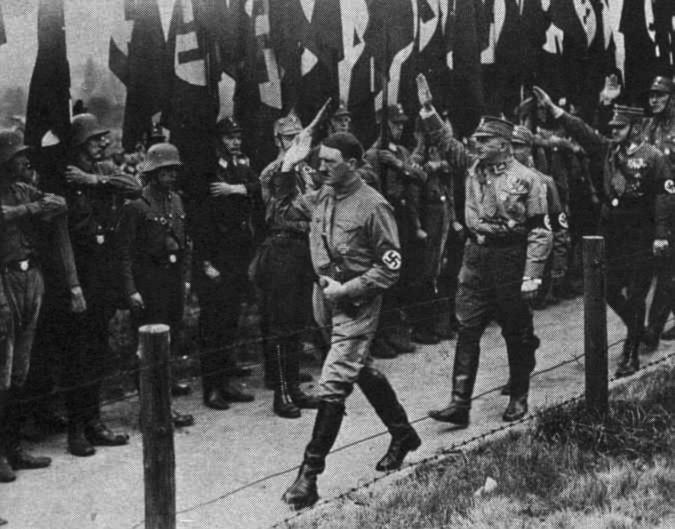
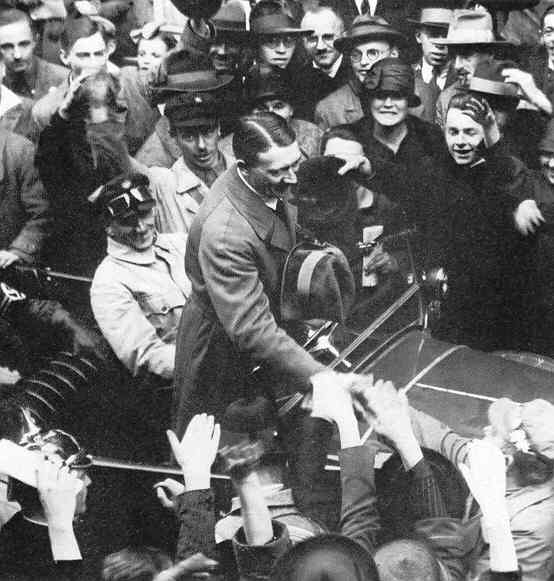
National Archives

Adolf Hitler and Storm Trooper
chief Ernst Röhm shortly before he had him executed (In June of 1934 Hitler
had Röhm and other leaders of the para-military Brownshirts killed as the price paid for support
of his Nazi government by the semi-autonomous German military)
Library of Congress
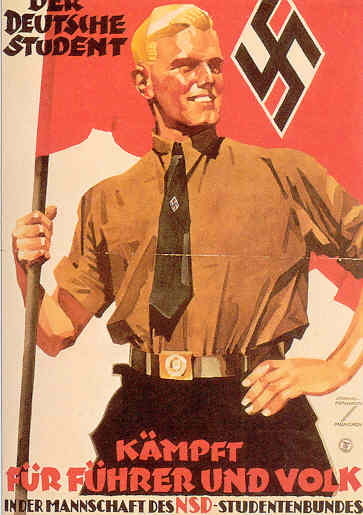
Library of Congress
HITLER'S NEW ORDER (NEUORDNUNG) |
| Although
Hitler himself was a coarse man, or at least a leader of a very course
group of Nazi German toughs, his policies seemed to have validated
themselves in the way they got Germany back up and moving in strength
as a society – something that many intellectuals in Europe and America
felt was becoming increasingly beyond the reach of their own
country. Hitler was very Darwinian in his understanding that
nothing should stand in the way of the strong taking control of history
– to promote the rising greatness of the Übermenschen (superior people) ... who according to Hitler were the Aryan Volk. The increasingly shrill anti-Jewish ranting of Hitler disturbed many thoughtful intellectuals, though there was always an undercurrent of anti-Jewish sentiment that ran through even some of this group at this time. Thus many felt inclined to look the other way when it came to what Hitler was doing to the Jews in Germany during the 1930s: he had removed them from all positions of importance in German society and treated them – even the highly educated, even the highly decorated for their service to Germany in the Great War – as the vilest of Untermenschen (inferior people) unworthy of any sentimental concern on the part of a true Aryan German. The military's take on Hitler. A key part of German society that was very ambivalent about Hitler’s leadership of Germany was the regular army, the Reichswehr. The Reichswehr had always been something of a state within the state and had its own ideas about how the state-military relationship was to work. In general it stood strongly with Hitler in his desire to continue to ramp up the remilitarization of Germany started secretly several years earlier by General von Schleicher. But the Reichswehr despised intensely the paramilitary SA corps and was deeply suspicious of the political authority assumed by Hitler’s SS troops. Sensing the deep dislike of the professional officer corps of the Reichswehr, and under the threat of a possible call of Hindenburg for martial law to eliminate the 3 million strong SA, Hitler made the decision to resolve the standoff by having the majority of his SA leadership, including his close associate Ernest Röhm, eliminated. On the "Night of the Long Knives" (June 30, 1934) Hitler had his SS troops and the German state police (the Gestapo) arrest thousands of SA troops (as well as a number of Hitler’s anti-Nazi opponents – including even briefly his Vice Chancellor Papen ) ... and even murder a number of others (including General and former Chancellor Schleicher and his family and many of Papen’s supporters). Röhm was arrested, but was murdered in his cell the next night. Hitler announced to the German people that by his actions he had stayed an attempt by Röhm and Schleicher to overthrow their government – another bold Hitler lie that the German people found convenient to believe. But the Reichswehr was made happy ... or at least happier ... by this purge of the SA. But Hitler would face problems from the Reichswehr in the years ahead as it appeared increasingly that he was heading Germany toward war. Ultimately the German judiciary failed to bring to trial those responsible for the murders ... establishing the principal that Hitler and his government were above the law. It also made clear to German society that no one, no matter how highly placed in the German government or society, was immune from arrest or execution if Hitler deemed it necessary. Hitler and his SS/Gestapo arm could now move through society at will, performing whatever deeds the Nazi regime saw as necessary. All Germans were now completely at the mercy of the Führer. German Christians respond. Tragically, a large number of German Christians greeted Hitler’s rise to power as something akin to divine deliverance, a "miracle of God." In April of 1933 they held a national convention in Berlin, seeking to unite the numerous Protestant denominations into a single national church, complete with a single national bishop. Their hope was to generate a particularly German spirituality based on an Aryan version of Christianity. In June of that year Ludwig Müller, a strong Nazi, became the head of this new federation of "German Christians" ... and with the creation of a new constitution for this Protestant Reich Church, became the national bishop voted to that position by a German national synod. From this point on the program (the "Aryan Paragraph") was undertaken to eliminate from German ministry all "undesirables" having Jewish or Slavic backgrounds – in order to purify the Aryan character of German Christianity ... and to give full recognition that Hitler was lord over the German church. To secure his position in the Church, Hitler in July of 1933 called for new church elections ... to replace those elected in the Landeskirche or National Church only the previous November. The results were that the German Christians won the vital Prussian Synod seats, plus most of the other synod seats. In response, the young Dietrich Bonhoeffer, widely recognized because of his anti-Nazi writings and speeches, was given the commission by the opposing members of the Landeskirche to draft a new confession (the Bethel Confession) ... which however got watered down greatly by fellow pastors. Bonhoeffer thus refused to sign his own work ... but did inspire others to try again. Then when that November some 20,000 German Christians demanded the removal of the Old Testament from the Bible because of its Jewish origins, Martin Niemöller founded a pastors' league ... the beginning of an effort to organize an anti-Nazi opposition within the church. The following May (1934), a group of predominantly German pastors – led by Karl Barth, Martin Niemöller, and Hans Asmussen – declared themselves at a meeting in Barmen (thus The Barmen Declaration): to be under the lordship of Jesus Christ and him alone; the Word of God was their only authoritative guide; and their Church was independent of and not subordinate to the State1 ... thus giving birth to the Bekennende Kirche (Confessing Church). This group would soon find itself in serious trouble with the Nazi authorities and many would eventually be either arrested (some 700 in 1935) or forced to flee Germany. Sadly, the impact of their effort though very noble was rather slight. Of the 45 million Protestants in Germany at that time, only some 150,000 would come to actually constitute this Confessing Church – that is, only one half of one percent of the total number of German Protestants ... although about one fifth of the pastors supposedly identified themselves as part of the Confessing Church. However, the Catholic Church – with its broader or international character and leadership in Rome, not Berlin – was less drawn into the Aryan appeal ... and traditionally was suspicious of Germany’s majority Protestantism anyway. German Catholics had long identified politically with the Center Party, one of the main political parties that had originally stood in opposition to the Nazi Party. However, Pope Pius XI did agree to a Reichskonkordat in 1933 with Hitler’s Germany ... in the hopes of softening the persecution just underway against German Catholic clergy and Catholic politicians by the Nazis. But ultimately Hitler paid no attention to the terms of the agreement. Catholics, priests and parishioners, were arrested on wild charges ... solely to shut down all voices in Germany except Hitler’s. Finally, in 1937, Pius repudiated the Reichskonkordat, issuing a new encyclical, Mit brennender Sorge (With Burning Anxiety) condemning the political-ideological trends that had developed in Germany under the "mad prophet" (obviously referencing Hitler ... though neither he nor his Nazi party were specified in the encyclical) ... a document secretly distributed (300,000 copies in German) to be read from Germany’s Catholic pulpits on Easter Sunday.2 Hitler was furious ... and had his Gestapo seize all copies they could get their hands on ... and increased dramatically the oppression of the Catholic Church. Catholic schools were shut down. Catholic youth organizations were ended. But amazingly, Catholics seemed to stand with the pope in this matter ... at least for the present. 1In Germany, as in most of Europe, the Church had always been considered to be a key part of the governing system of the country ... even financed in its operations by state funding - in Germany, via the ancient Kirchensteuer or church tax. 2But pope Pius also quickly answered Hitler’s accusations that the pope was pro-Communist ... in issuing another encyclical, Divini Redemptoris, specifically denouncing Communism as anti-religious, citing the persecution of the Church that accompanied the establishment of Communism in Russia. 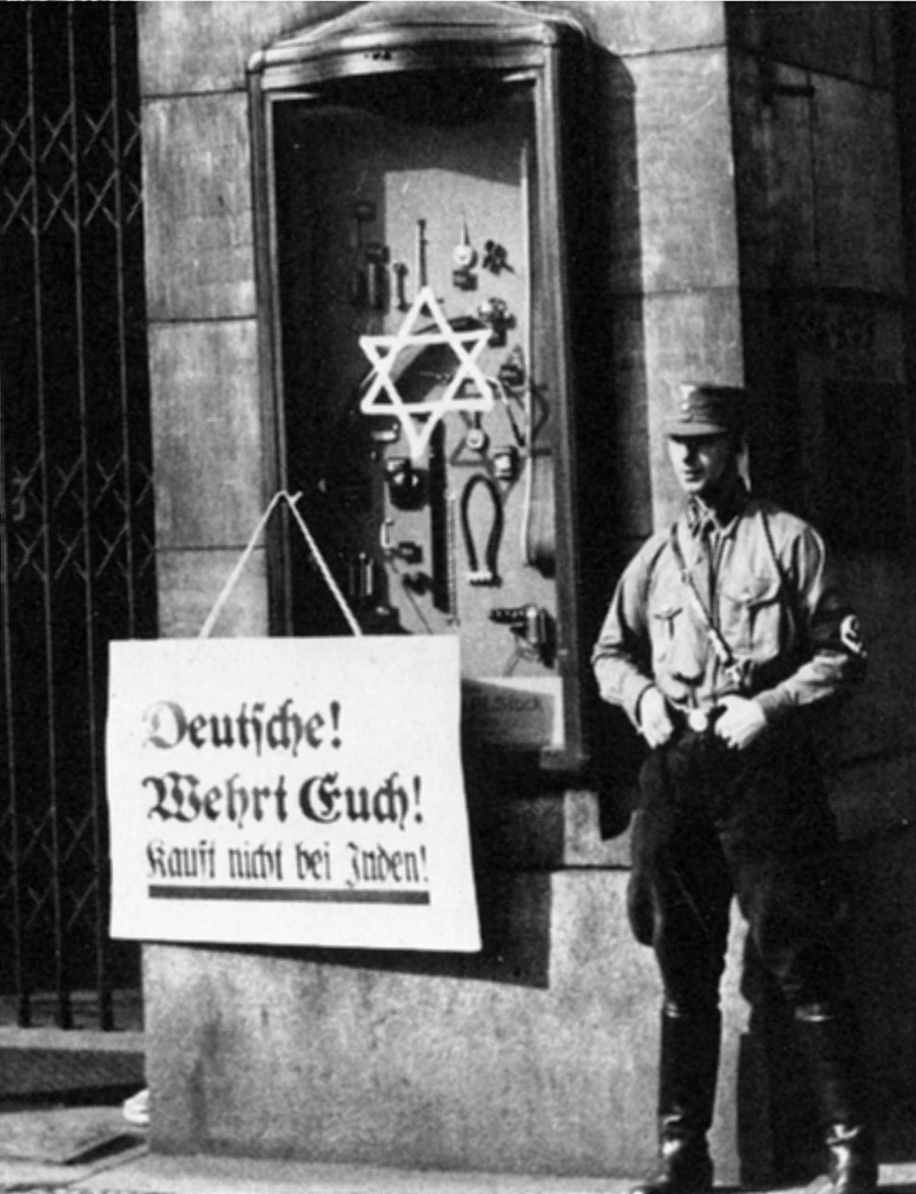
On April 1st, 1933, the
boycott which was announced by the National Socialistic
(NAZI) Party began.
A placard at the Jewish Tietz store (Berlin) reads,
"Germans,
defend yourselves, do not buy from Jews."
German troops crossing the
Rhine at the Hohenzollern Bridge on March 7, 1936 - in violation of the Versailles
Treaty German troops entering Dusseldorf under Hitler's orders unopposed by the French who were supposed to keep the Rhineland area demilitarized 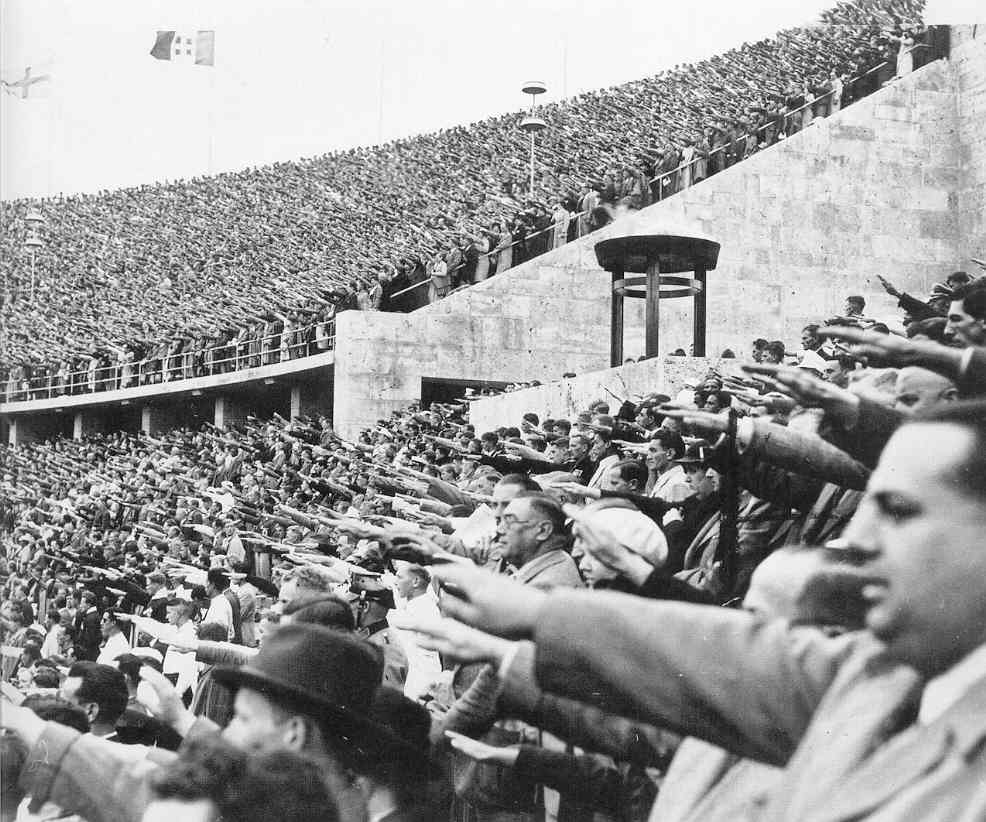 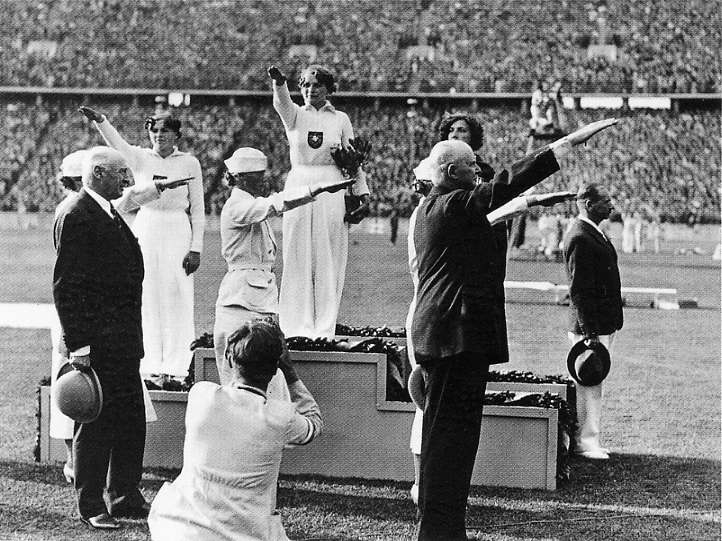
German athletes saluting
Hitler at the 1936 Berlin Olympics (but the entire German track
and field team took home fewer medals than the 13 medals taken
home by the 10 Black athletes of the United States!) 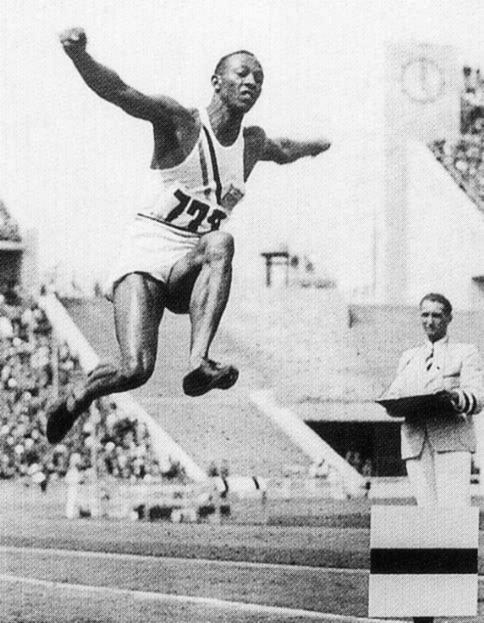
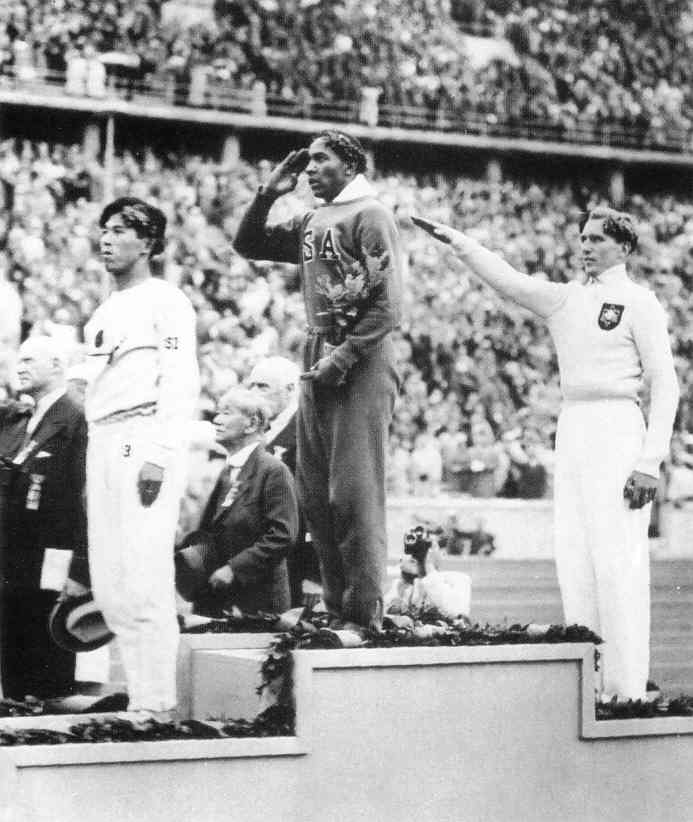
and embarrassing Hitler's claim to Aryan superiority - 1936 Hitler also tries to woo America through Lindbergh - who found himself favorably impressed with the material and social "progress" Germany had made under the Nazis. 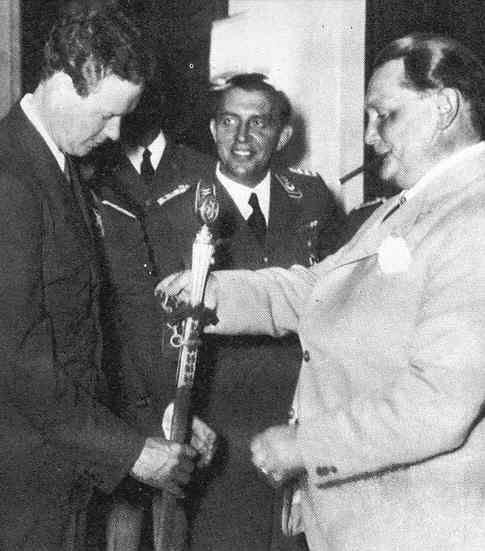
National Archives 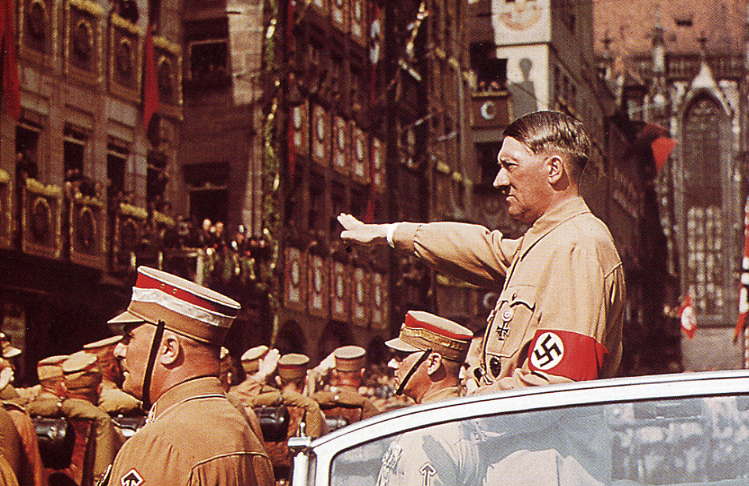
Hitler at a Nazi Party rally
in Nuremburg - 1938 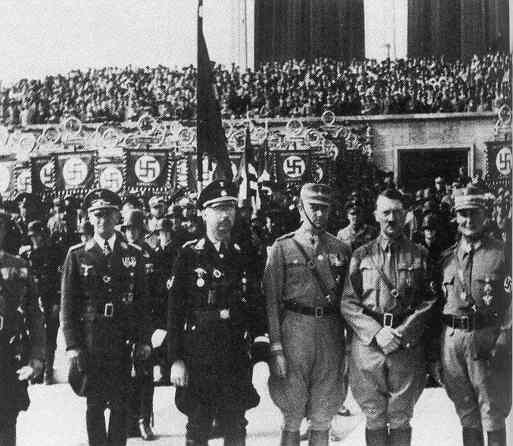
Library of Congress 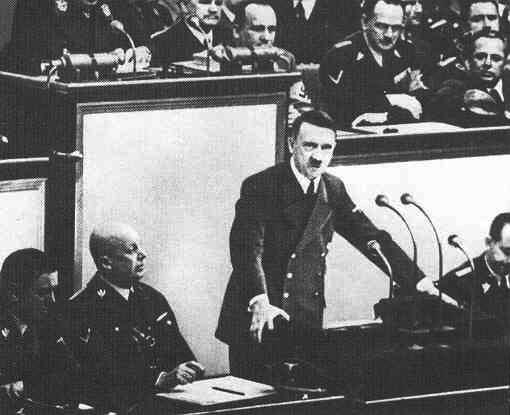
National Archives  Go on to the next section: The Spanish Civil War
 |

